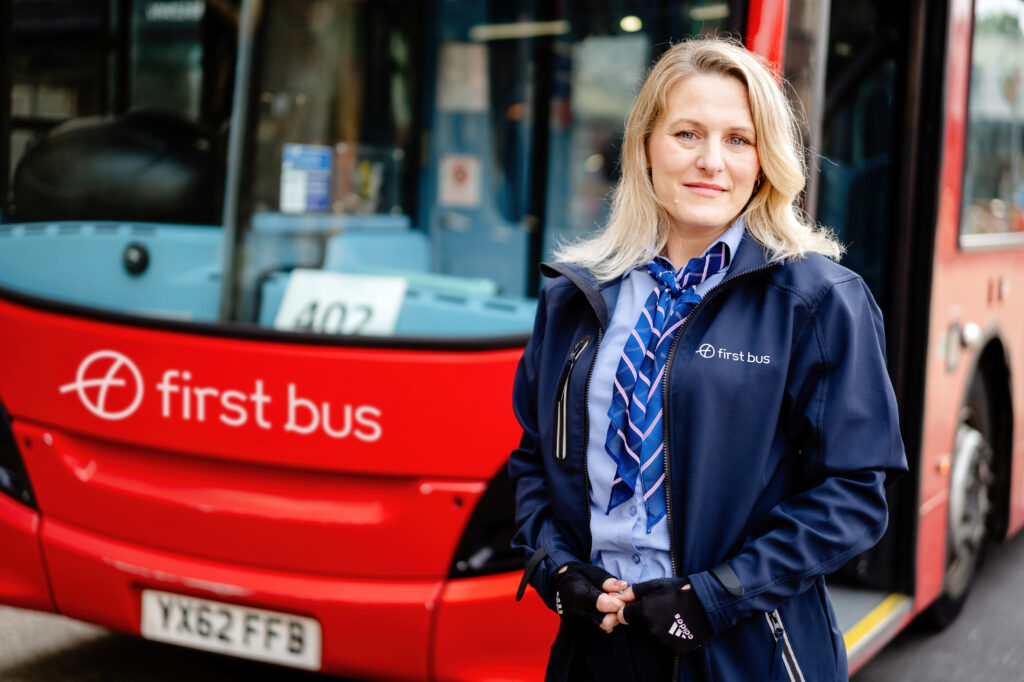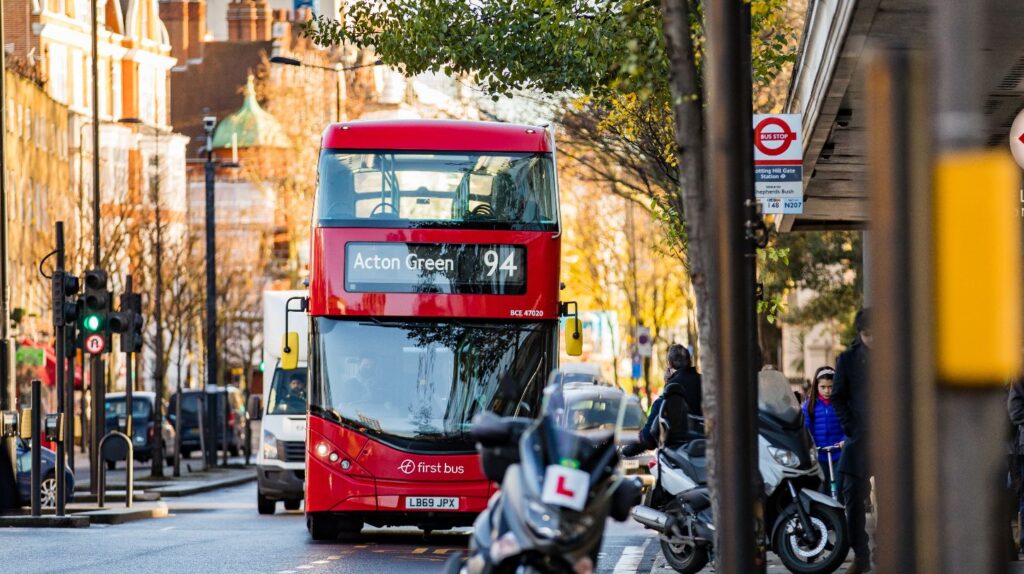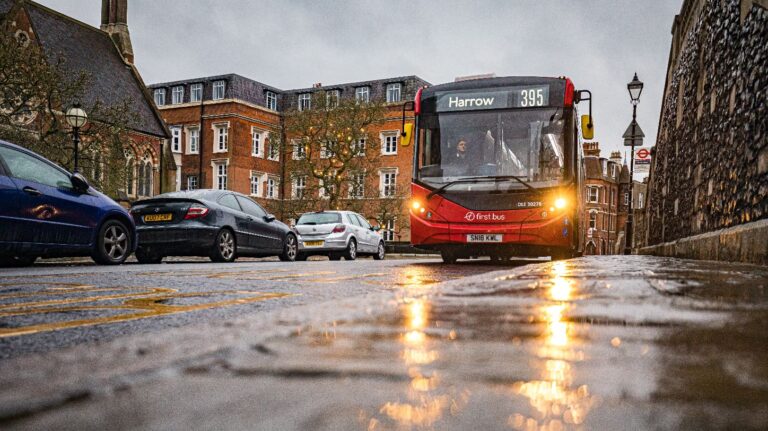London’s decarbonisation journey has been clouded by centuries of pollution, but today, the capital’s newest bus fleet operator is driving next phase of the green transition.
For hundreds of years, London was the world’s beating heart of trade and commerce, a price the city paid for in part with the health of its people. As the capital grew, its lifeblood, the coal that powered its industry and warmed workers’ homes, clouded the skies and poisoned the air. Every few years, this thick smog would coalesce into dangerous concentrations, and the devastating effects would initiate environmental reform – with the greatest of these culminating in the ‘Great Smog’ of 1952.
For five days, noxious fumes streamed through the streets and ground the city to a halt, the pollution claiming an estimated 12,000 lives and forever after earning the city the name ‘Big Smoke’. In response, the UK government passed the Clean Air Act of 1956 to regulate the unfettered release of toxic particulates. In the years since, a host of cultural, environmental and technological changes and advances have greatly improved air quality but, like a bad smell, the problem lingers.
Presently, the London Air Quality Network estimates that up to 9,400 Londoners still die prematurely due to poor air quality per year, with Transport for London (TfL) approximating this figure closer to 4,000. Regardless, both organisations agree that one life lost is one too many, and despite the expulsion of coal-fuelled chimneys and with it the persistent pea-soup fog, transport – a major emissions contributor – remains a pervasive part of Big Smoke living.
The UK government sought to deal with private transport vehicle emissions by fostering an electric vehicle (EV) transition through its Net Zero programme. Financial incentives were offered to drivers of internal combustion engine (ICE) vehicles to switch to EVs, EV infrastructure was built and existing infrastructure modified. Concurrently, legislation such as the Zero Emission Vehicle (ZEV) Mandate has tightened manufacturing regulations with the aim of reducing the number of ICE vehicles on the road.
Squeezing manufacturers and thereby reducing consumer choice is a methodology not so easily applied to public transport operators, however. In particular, bus operators found the EV transition onerous as the processes involved with fleet replacement and the cost of constructing new infrastructure dwarfs that of other businesses.
Despite this, TfL and the bus operators under its contract maintain one of the largest fleets of low-emission buses in the world; its’ some 9,000 vehicles currently meeting or exceeding Euro VI emission standards. So, how has London initiated this change, and what can other operators learn from those spearheading the (electric) charge in the industry?
Leading the charge
Since TfL began administering London’s transport in July 2000, the UK’s capital has increased its share of low-emission buses from 0% to 100% (as of 2021 to Euro VI emissions standards). During this time, TfL also increased its zero-emission fleet from 0% to 20%, as of 2025. A quarter of a century since its inception, TfL now operates the largest zero-emission bus fleet in Western Europe. The day-to-day operational tasks – things such as procurement, maintenance, route planning, and fleet management – however, are conducted by bus operators under TfL contract. And for TfL to award these contracts, bus operators must align their operations with TfL’s wider decarbonisation goals.
“Air pollution increases the risk of developing asthma, lung cancer, heart disease and a stroke,” says Lisa Dipnarine, TfL’s head of bus business development. “Decarbonising London’s bus fleet and other measures like the London-wide Ultra Low Emission Zone (ULEZ) will help remove harmful emissions from London’s air.” ULEZ is primarily directed at private vehicles, regulating buses through the introduction of the Euro VI emissions standards. Bus operators’ overarching regulatory system is the Low Emission Zone (LEZ) which also manages coaches and heavy good vehicles (HGV) emissions.
FAST FACT: 1,951 battery-electric, 20 hydrogen, and 3,776 hybrids make up a low-emission majority of London’s bus fleet Source: Transport for London
Launched in 2008, the LEZ subjects non-compliant commercial vehicles operating within Greater London to a £100 per day charge. As with ULEZ, automatic number plate reading (ANPR) cameras monitor vehicles entering the area, checking license plates against DVLA records. Despite their short operational life, both projects have already yielded measurable results. A 2020 Greater Authority London study attributes a 29% reduction in roadside NO₂ to ULEZ, with a 2025 TfL study corroborating these findings.
The latter analysis found that ULEZ and LEZ led to a 27% decrease in nitrogen dioxide across London meriting its implementation. In practicality, for bus operators, adhering to regulation means purchasing alternatively fuelled buses or modifying ICE vehicles for hybrid purposes. For the newest of London’s eight operators, First Bus London, electrification is a core component of its present and future fleet operations.
“Our focus is on delivering a cleaner, more reliable service for the communities we serve – something that matters to every Londoner who relies on our bus network every day,” says Bill Cahill, managing director at First Bus London. “We’re investing in our people, our infrastructure and our fleet to ensure we’re not only meeting expectations but helping raise the bar for what a modern bus service should look like in the capital.” Founded in February 2025 after its parent company FirstGroup acquired RATP Dev Transit London for £90m, First Bus London immediately set to work improving on its predecessor’s considerable electric bus (ebus) infrastructure network.

“Becoming part of First Bus opens an exciting new chapter for our operation,” Cahill continues. “With First Bus’ support, we are well-positioned to enhance our service delivery while accelerating our journey toward a zero-emission future.”
The company currently operates 21 electric routes out of its 83 total routes, with six electrified garages in operation and further upgrades planned for Q4 2025. By 2034, First Bus London intends to operate an entirely electric fleet and has begun retraining engineers in anticipation of the transition. Engineering teams will benefit from upgraded telematics at the four operational control centres to deliver real-time charging visibility and diagnostic fault finding across the fleet.
Ebuses also offer First Bus London the chance to homologise its fleet via mass system integration software updates, something prevalent in newer buses but easier to conduct in state-of-the-art, electrified models. “We will get to 100% by 2034,” Cahill asserts.
“That’s absolutely nailed on. It’s the speed at which we get there that’s the challenge. We’ve got plans for the other non-electrified garages, but those plans haven’t yet been delivered. It’s only when you get to the point of delivery you find that something’s not going to be quite as easy as you thought it was going to be.”
London leads
Acting as an industry knowledge aggregator, TfL shares its expertise with the transport operators under its contract to mould and maintain its transport network.
“TfL facilitates forums with the bus operators to share knowledge and experience as it works towards transitioning to a fully zero-emission fleet,” Dipnarine explains.
Through this support, operators have become increasingly adept at adapting to TfL guidelines to the point of antiquating incoming regulations before implementation – such as with the Low Emission Bus Zone (LEBZ) programme. Introduced between 2017 and 2019, LEBZ targeted pollution hotspots outside central London with the aim of reducing NOx and particulate matter emissions.
The first LEBZ established along Putney High Street saw more than 1,200 hourly exceedances of NO₂ in 2016 which far exceeded legal thresholds. Each route chosen disproportionately affected high numbers of people as they ran through pedestrian hotspots such as school pick up points and crossroads. In total, 12 LEBZs were rolled out between 2017 and 2019; however, by 2021, all buses in operation within Greater London met the Euro VI emission standards, effectively rendering the programme redundant.

As with ULEZ, LEBZ saw a massive decline in harmful air particulates across all zones, with the lowest recorded reduction of NO₂ 87% at Putney Road. Outside of cost considerations, upgrading vehicles is straightforward. What operators value is TfL’s guidance on the specific quirks of operating within London. This includes routing, traffic management and creating flexible intelligent transport systems, but is also vitally important in infrastructure assessment.
“Like any other cities that are electrifying their bus fleet, London is working through a series of challenges including access to and the availability of power from the central grid to bus garages,” Dipnarine continues. “This is also in addition to capacity challenges at operator-managed garages for the required bus charging infrastructure.”
FAST FACT: More than 20% of routes are fully served by zero-emission vehicles; 107 routes in total Source: Transport for London
Additionally, London’s dense environment, high property prices and rapid urban sprawl greatly reduce the number of viable depot locations. First Bus London, for example, currently operates around 1,000 buses from 10 depots across west and central London. Maintaining a constant power supply to these buses also presents a problem, with energy costs the main area of expenditure after procurement.
“TfL engages with Distribution Network Operators and wider industry to highlight the wider power supply challenges to bus garages and impacts to TfL’s electrification goals,” Dipnarine adds.
As the fog clears over the Big Smoke, TfL must ensure that bus operation in London continues to work towards the implementation of clean technology. How the transport body and its operators guarantee this could be the difference between suffocating smog or sunny skies.
“Technology for electric buses is constantly evolving, Dipnarine concludes. “Aside from electric buses, TfL is running a trial of 20 double-deck hydrogen fuel cell buses, to inform our understanding of what role hydrogen can play in a zero-emission fleet. This will improve industry-wide knowledge and adoption as well as its overall performance over time, compared to the more matured traditional diesel buses.”
This article was originally published in the September 2025 issue of CiTTi Magazine.
Achievements and innovations in tolling will be recognised and celebrated at the fourth annual CiTTi Awards on 25 November 2025 at De Vere Grand Connaught Rooms in London. Visit www.cittiawards.co.uk to learn more about this unmissable event for the UK’s transportation sector!





